All Courses & Ebooks
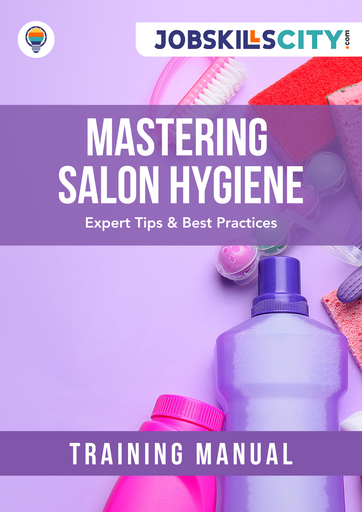
N 1,600
Are you looking to upgrade your salon hygiene training? This manual is perfect for anyone looking to enhance their understanding of salon hygiene. Whether you're a seasoned industry professional or just starting out in the beauty world, "Mastering Salon Hygiene" will provide you with expert tips and best practices that are essential for success in any salon or spa setting.
With easy-to-follow steps on how to maintain good hygiene practices in the workplace this ebook is essential for any modern salon or industry related business that wants to remain compliant with health regulations.
Get ready for a clean start!
This essential training manual is perfect for students, salon owners and professionals who are looking to stay up-to-date on crucial hygiene guidelines in the workplace.
This comprehensive training manual covers a wide range of topics, including workplace hygiene, hygiene procedures, personal hygiene, avoiding cross infection and Sanitation V's Sterilisation.
You’ll learn more about hand washing techniques, hygienic work surfaces, salon chairs & beds as well as how to best use beauty instruments and tools for the safety of yourself and your clients.
Lifetime access

FREE
When you complete this ebook, you should be able to describe the following:
- Demonstrate knowledge of cross-connection control devices, their applications, and operation.
- Demonstrate knowledge of the procedures used to install, maintain, repair, test, and troubleshoot cross-connection control devices.
Author: BCcampus, Canada: Plumber Apprenticeship Program, Level 3

FREE
The video lesson teaches about the different types of bed and bathroom linen found in hotel guest rooms, as well as the amenities provided for guests such as toiletries, stationery, and Do Not Disturb signs. It also emphasizes the importance of guest feedback forms for understanding their needs and challenges. Additionally, the video explains the free-to-use facilities such as tea, sugar, and Nescafe and how they should be used by guests.

FREE
These video lessons cover the servicing of a guest room. When servicing a guest room there are different stages. The room attendant must prepare themselves before cleaning the guest room, prepare cleaning supplies and rooming list with the number of rooms to be cleaned, organize trolley with bed linen, bathroom linen, and guest room supplies etc.
The guest bed must also be made. The first step in making the bed is stripping it, which involves removing all the bed linen and checking for any guest belongings left behind. After checking for guest belongings, remove the duvet cover and pillowcases, and arrange the bed linen smoothly. Finally, make the bed properly, ensuring that the duvet is arranged neatly and the are fluffed.
Cleaning of the bathroom and guest room must be done. Clean the mirror, shaving mirror, hand wash, and toilet seat; dry surfaces properly; dust the entire bathroom, including tile walls and towels; replenish amenities, such as shower gel, shampoo, and bath soap; mop the floor to finish the cleaning process.

FREE
This video lesson covers the cleaning of a vacant room. Some of the steps include the following; Remove any sleep well cards and reorganize the bed to standard; Turn off the lights and remove any breakfast cards; Draw the curtains and decorate the bed as it should be during the day; Dust the room with a dry cleaning cloth; Check the bathroom amenities and supplies, fold toilet paper, and mop the floor- Spray air freshener and do a final check of the room; Vacuum the carpet to finish the cleaning process.

FREE
Turn down service is an extra service offered to hotel guests to facilitate their sleep. The procedure starts by drawing the curtains. Turn down bed covers so that it is ready for sleeping. A sleep well card is placed on the bed and turn down mats and slippers are provided. A breakfast card is placed for guests to order breakfast without going to the restaurant. The chair is left half open and the TV remote is placed in its correct place. The procedure is checked and everything is made neat and ready for sleeping.
Turn down service is not done in all hotels but is an important service for guests.
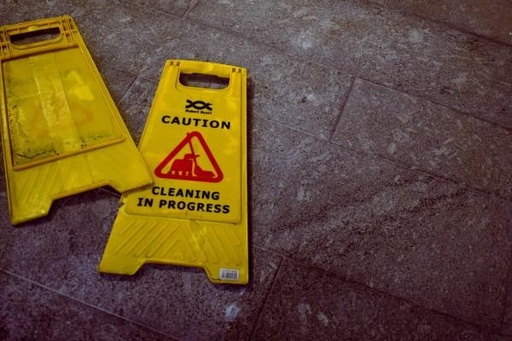
FREE
This lesson covers the cleaning of public areas. Public areas have different surfaces that require specific tools and products for cleaning. Before cleaning, identify all surfaces and collect the necessary equipment. Start by opening curtains and checking for any leftover items. Vacuum carpets before dusting, starting from the far end to the exit. Check for stains and use appropriate cleaning products. Clean wooden surfaces with multi-surface cleaner. Dust stair handles and mop stairs, taking care to clean both sides of each step.
Manage dust by checking at intervals and adjusting cleaning frequency as needed. Check for any rubbish or items left behind by guests or visitors. Take care not to damage painted surfaces with water. Regularly check and maintain cleanliness of public areas.

FREE
This video lesson covers different techniques for cutting vegetables. Variety of vegetables are cut into different shapes. Julienne is a french method of cutting vegetables into small sticks. Vegetables like peppers, tomatoes, carrots, onions, and potatoes can be cut into julienne.
Brunoise is a method of cutting vegetables into fine dices. Macedoine is a method of cutting vegetables into small cubes and is usually used for fruit salad preparation. Dices are larger than macedoine and are cut into the same shape. Paysanne is a thin, flat, and square cut of vegetables. Chiffonade is a style of cutting vegetables into thin strips, usually used for salads. Batonnet is a method of cutting vegetables into sticks, like butternut, carrots or cucumbers.

FREE
This video lesson covers the cooking methods blanching and glazing of vegetables. Blanching is a cooking method where vegetables are boiled in water above 100 degrees Celsius with a pinch of salt to maintain taste and colour. Vegetables should be boiled for 10-15 minutes to make them edible and crunchy. Blanching is a pre-preparation method for vegetables before other cooking methods like sautéing or pan-frying.
The video demonstrates how to blanch and peel tomatoes, spinach, cauliflower etc. Glazing involves cooking vegetables in butter and sugar until they are crunchy and shiny. Carrots can be cut into any shape desired before being grazed. Cooling vegetables quickly after cooking is important to prevent bacterial growth.

FREE
This video lesson covers the preparation of stocks. Stocks are liquids that contain soluble nutrients and flavor extracted from vegetables, bones, and spices by prolonged simmering. A good stock has fresh vegetables, herbs, bones, and spices. Brown stock uses brown mirepoix (a combination of vegetables with carrots) while white stock uses white mirepoix (a combination of vegetables without carrots).
Chicken stock requires deboning chicken and chopping the bones into small pieces. Fish stock requires a white mirpua and fish bones or trimmings. Fish stock is only used for fish and seafood dishes due to its strong flavor. Salt and pepper should be added sparingly to avoid producing overly salty sauces or soups. Stock is a foundation of cooking and can be used to produce many sauces and soups.

FREE
There are a variety of vegetables available for sautéing, including carrots, spinach, french beans, garden peas, cauliflower, zucchini green pepper, and onions. A range of condiments, including salt, white pepper, aromat, chopped garlic, chopped onion and fresh cream can be used. Vegetables can also be grilled and roasted, these techniques are demonstrated in this video lesson.

FREE
Soups are a great option for simple meals and are very nutritious.
Soups can be classified into thin soups, clear soups, cream soups, special soups, and national soups. Making soups requires attention to detail and proper technique. These video lessons gives a comprehensive guide to making different types of soups using a variety of ingredients.

FREE
These video lessons demonstrate how to prepare meat, fish and poultry, namely grilled steak, grilled tilapia fillet, fillet fish in butter and roasted chicken.

FREE
In this video, the instructor demonstrates how to make two types of salad dressings: vinaigrette and tata sauce. For the vinaigrette dressing, he combines chopped onions, white vinegar, olive oil, salt, and white pepper. For the tata sauce, he uses mayonnaise, onion, parsley, capers, peppers, gherkins, and boiled egg white. The instructor emphasizes the importance of harmonizing the flavors of the dressing with the salad ingredients and encourages viewers to experiment with different flavor combinations to create unique dressings.
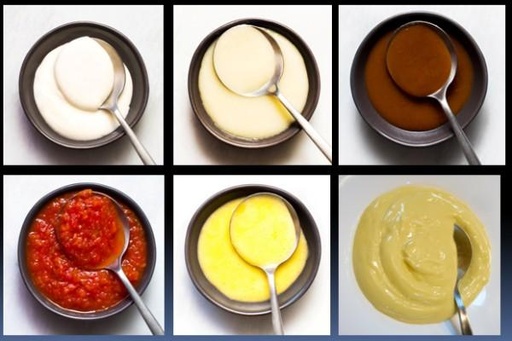
FREE
This video lesson teaches the concept of sauces and introduces the mother sauces, which serve as the foundation for many other types of sauces. Mother sauces such as fish verte and basic brown sauce or demi-glace are demonstrated. Other sauces such as chicken verte, bechamel sauce and veloute are also demonstrated.

FREE
This video lesson covers the preparation of Roux for mother sauces. Roux is a combination of fat and flour cooked together. Roux is used as a thickening agent in various dishes such as sauces and soups. There are three types of roux: white, blonde, and brown. White roux is used for white sauces and soups, blonde roux for velouté sauces, and brown roux for brown sauces and soups. Different types of roux have different colors and flavors.

FREE
This video lesson discusses the preparation and plating of fruits. Fruits are an important food group and are full of nutrients, especially vitamin C. Fruits can be prepared as individual plates or platters. Different types of fruits include hearty fruits (green apple), citrus fruits (orange), soft fruits (strawberry), and tropical fruits (pineapple, papaya, mango).

FREE
These video lessons covers the preparation of pasta. Pasta is a popular Italian dish that has become international. The video demonstrates the preparation Penne pasta and Spaghetti which are types of pasta, it also provides a step-by-step guide to making pasta with cheese sauce.

FREE
This video lesson covers Roasting Potatoes and making French Fries. Roasting potatoes involves combining two cooking methods: blanching and oven roasting. French fries are made by cutting potatoes into thin, batonnet shapes and deep frying them. Watch for a step-by-step guide on how to prepare them.

FREE
Mise en place is a French term for having all your ingredients measured, cut, peeled, sliced, grated, etc. before you start cooking. Pans are prepared. Mixing bowls, tools and equipment set out. By making sure ingredients are prepped and workstations are organized before you begin assembling a dish, you'll save time. And not only will you waste fewer minutes completing prep work, but you'll also eliminate unnecessary steps or duplicate work in the kitchen.
These video lessons provide a comprehensive guide in preparing and processing vegetables for use.

FREE
This video lesson looks at simple salad preparations. Salads can be simple or compound, and can be a meal or a course itself. Salad ingredients can be raw or cooked, or both, and are usually served with dressing.
There are two types of salads: simple salads and mixed or compound salads. Simple salads have one ingredient with dressing and other components. Mixed or compound salads have multiple ingredients with dressing and other components. Salads can be served with dressing on top or dressing aside, depending on preference.

FREE
This free ebook was created to empower learners to build their sewing skills. It does not matter if you are working on your first pillow case, putting in your first zipper, making a tailored suit or couture evening gown; this ebook has something for everyone.
Contents include: Janome Machines, Parts of your Sewing Machine, Winding the Bobbin, Inserting the Bobbin, Threading the Machine, Drawing Up the Bobbin Thread, Sewing Tools and Equipment, Wovens and Knits etc.
Author: The Make Den Sewing Studio
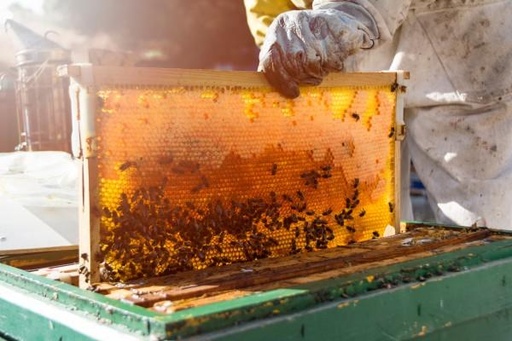
FREE
These training manuals in “Beekeeping” (NSQF compliant level 4), comprises of theory and practical components. This programme is designed for youths of rural and semi urban areas who are interested in a career in the beekeeping sector.
Competencies covered include; to carry out beekeeping operations right from understanding bee biology and behaviour to harvesting and processing of products.
Author: National Institute of Open Schooling - Government of India

FREE
As a Assistant Beauty Therapist, you are expected to be knowledgeable about beauty therapies, health and hygiene, tools, equipments and materials required for different services in salon.
Through these training manuals, you will learn about services like basic skin treatments, removal of superfluous hair, manicure and pedicure, skin and hair service and the art of makeup. You will also learn about proper maintenance of work area, care of beauty salon and the art of creating a positive impression at work. A basic knowledge of these areas will help you in assisting the beautician in her work in the salon.
These course manuals on “Beauty Therapy” comprises of all the 7 NOS as compiled by the SSC (Sector Skill Council) of Beauty and Wellness Sector in India, to ensure that you fit the job role of an “Assistant Beauty Therapist”.
Author: National Institute of Open Schooling - Gov. of India

FREE
As a pedicurist and manicurist you are expected to have a knowledge of the tools, equipments and materials used, besides the skills of carrying out procedures for different types of manicures and pedicures.
You should not only be well versed with the services and service attitude but also exhibit a pleasant and professional personality, excellent interpersonal and communication skills. You must be tactful in dealing with clients, colleagues and the general public. The individual must exhibit a neat personal appearance and observe all prescribed norms of the local administration and the salon.
These course manuals comprise of all the NOS developed by the Beauty and Wellness Sector Skill Council in India and will train you to be competent for the job role of a “ Pedicurist and Manicurist”.
Author: National Institute of Open Schooling - Gov. of India

FREE
This video lesson delves into engine scanning techniques at Level 4 in the field of automobile technology. It explores the use of scanning tools and diagnostic equipment to analyze and troubleshoot engine performance. The lesson covers interpreting scan tool data, identifying common engine issues, and implementing appropriate repair procedures.
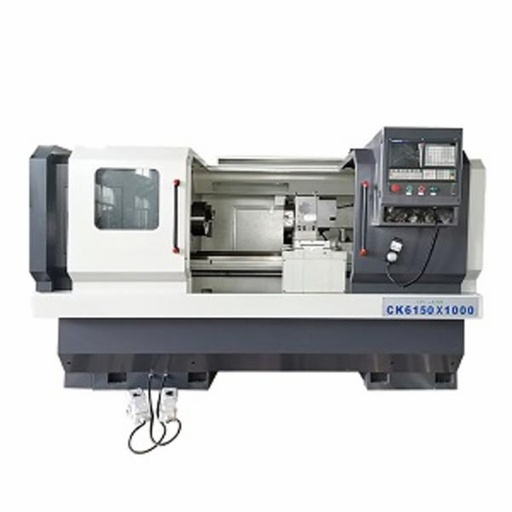
FREE
In this video lesson, viewers will be introduced to lathe machines at Level 4 in production technology. The lesson covers the fundamental operation of lathe machines, including workpiece setup, tool selection, and turning operations. Viewers will gain a solid understanding of precision machining techniques, safety considerations, and the importance of proper lathe machine maintenance.

FREE
This video lesson focuses on repairing CCTV systems at Level 4 in the field of electronics. Viewers will learn troubleshooting techniques, identify common CCTV issues, and gain practical knowledge in repairing or replacing faulty components. The lesson emphasizes the importance of proper installation, configuration, and maintenance of CCTV systems for effective surveillance.

FREE
In this video lesson, viewers will learn about repairing door lock code systems at Level 4 in electronics. The lesson covers diagnosing and troubleshooting door lock code system malfunctions, repairing or replacing faulty components, and programming new codes. Viewers will understand the significance of security and proper functionality in door lock systems.

FREE
This video lesson focuses on the installation of CCTV systems at Level 4 in the field of electronics. Viewers will be guided through the step-by-step process of installing CCTV cameras, configuring recording devices, and setting up monitoring systems. The lesson highlights best practices for CCTV installation, cable management, and system integration.
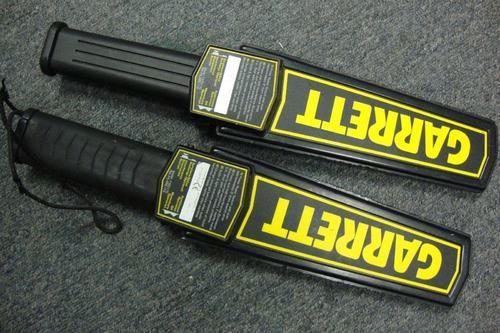
FREE
In this video lesson, viewers will gain insights into repairing handheld metal detectors at Level 4 in the field of electronics. The lesson covers diagnosing and troubleshooting common issues with metal detectors, repairing or replacing faulty components, and calibrating the detector for accurate metal detection. Viewers will understand the importance of proper maintenance and performance testing for handheld metal detectors.
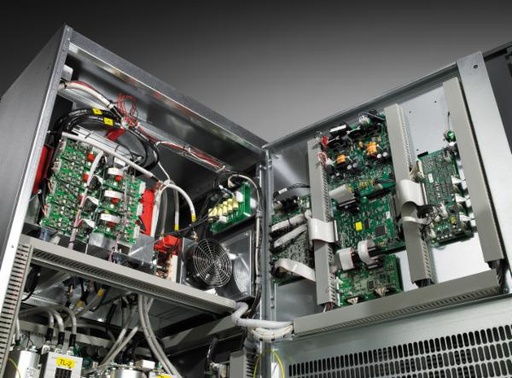
FREE
This comprehensive video lesson focuses on the repair of office Uninterruptible Power Supply (UPS) systems at Level 4 in the field of electronics. Viewers will gain practical knowledge and skills in diagnosing and troubleshooting common UPS issues, identifying faulty components, and implementing repair procedures. The lesson covers topics such as battery replacement, circuit board repair, and testing procedures to ensure the proper functioning of office UPS systems.
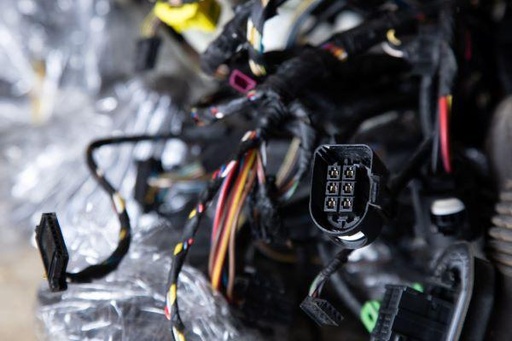
FREE
In this informative video lesson, viewers will delve into the intricacies of automobile electrical and electronic systems. The lesson provides an in-depth understanding of the various components and subsystems involved in modern automotive electrical systems, including the battery, alternator, starter motor, ignition system, and lighting system. Viewers will learn about the principles of operation, diagnosis, and repair techniques for electrical and electronic systems in automobiles.

FREE
This detailed video lesson focuses on the repair of walkthrough metal detectors at Level 4 in the field of electronics. Viewers will learn about the internal components and functioning of these detectors, common issues that can arise, and practical repair techniques. The lesson covers topics such as troubleshooting faulty sensors, adjusting sensitivity levels, and calibrating the detector for accurate metal detection.
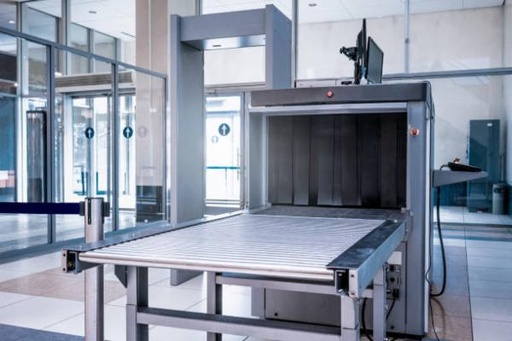
FREE
In this comprehensive video lesson, viewers will explore the repair of X-ray luggage scanners at Level 4 in electronics. The lesson covers the working principles of X-ray scanners, diagnosing common issues, and repairing or replacing faulty components. Viewers will gain insights into calibration procedures, safety protocols, and maintenance practices for ensuring the reliable operation of X-ray luggage scanners.
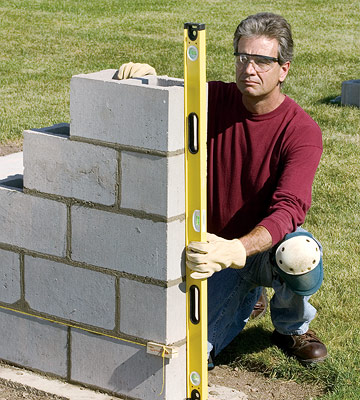
FREE
The video tutorial provides step-by-step instructions on how to build a block wall, including the tools needed such as a wheelbarrow, trowel, masonry hoe, and line blocks. The tutorial covers mixing mortar, preparing blocks, laying blocks with a lead and line, adding the enclosure, and laying a bond beam. The importance of leveling and plumbing the wall, as well as adding steel and filling the enclosure with mortar, is emphasized. Additionally, the video demonstrates how to use brackets and joint the wall with a concave joiner, while keeping the wall clean.
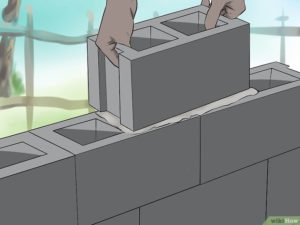
FREE
The video shows two different methods for laying blocks quickly and accurately. The first method involves using speed lead poles which are metal poles that are braced and plumbed on the corners. A string line is pulled between the poles to eliminate the need to freehand corners when laying blocks. This method saves time and ensures a perfectly level foundation up to 8 feet or higher. The video demonstrates how to set up the speed lead poles using 2x4s, steel square tubing, and C clamps, as well as how to establish a reference mark of elevation using a laser level.
The second method involves creating reference marks about 48 1/2 inches off the concrete footer, dropping down and making the actual marks, and hooking a string line to each line. The string lines are used to ensure the exact location and height of each row of block and provide a straight line to lay the block. The video also demonstrates how to move the string line up an 8-inch increment on each marked pole to keep the whole foundation level, even, and straight as it goes up. This method also ensures that the foundation is level and square, making it faster and easier to build a house.
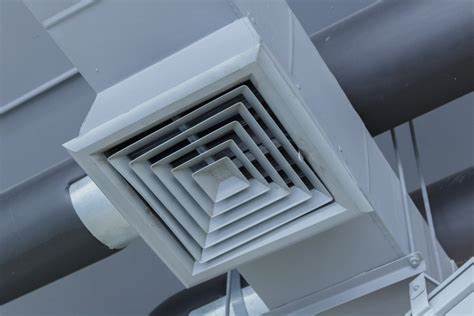
FREE
In this video lesson, viewers will gain a comprehensive understanding of Constant Air Volume (CAV) HVAC systems. The lesson explores the working principles, components, and control strategies of CAV systems. Viewers will learn how CAV systems maintain a constant air volume while regulating temperature and humidity, and how to troubleshoot common issues and optimize system performance.
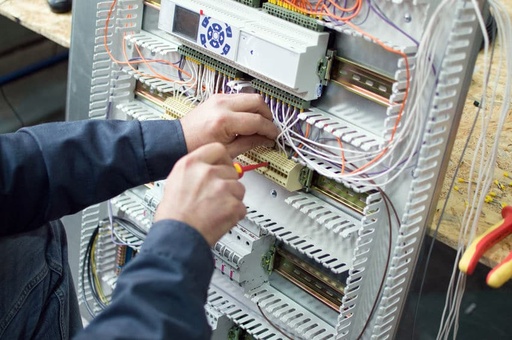
FREE
This comprehensive video lesson provides an in-depth understanding of chiller systems used in HVAC process engineering. Viewers will learn about the basic principles of chiller operation, different types of chillers, and their applications in commercial and industrial settings. The lesson covers topics such as chiller components, refrigeration cycles, energy efficiency considerations, and troubleshooting techniques.

FREE
Assemble, install, or maintain solar photovoltaic (PV) systems on roofs or other structures in compliance with site assessment and schematics. May include measuring, cutting, assembling, and bolting structural framing and solar modules. May perform minor electrical work such as current checks.
Similar job titles: Installer, Photovoltaic Installer (PV Installer), PV Design Technician (Photovoltaic Design Technician), Solar Designer, Solar Installer, Solar Installer Technician, Solar Photovoltaic Installer (Solar PV Installer), Solar Technician
Author: Industrial Training Fund, Technical & Vocational Skills Training Department, Nigeria

FREE
Electrical Level 1, 2, and 3 are job-oriented vocational training programs that aim to impart knowledge and skills related to electrical systems. These programs are based on the National Skills Qualification Framework (NSQF) and are designed to provide practical training in the field of electrical technology. Level 1 covers the basic concepts of electrical systems, safety procedures, and installation techniques. Level 2 focuses on advanced electrical installation, maintenance, and troubleshooting. Level 3 is a specialized program that includes training in renewable energy systems and automation technologies. The courses are structured to provide both theoretical and practical training to students, with an emphasis on hands-on experience. Successful completion of these programs can lead to employment opportunities in a variety of industries that require skilled electrical technicians.
National Occupational Standards for Construction/Building Trades in Nigeria - Electrical Levels 1, 2 & 3
Approved by the National Board for Technical Education (NBTE) - National Skills Qualification (NSQ).
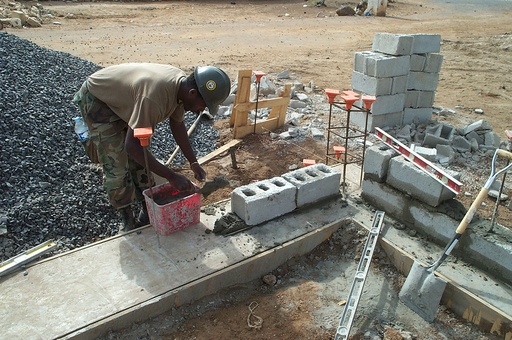
FREE
Masonry Levels 1, 2 & 3 are vocational training programs that follow the National Skills Qualification Framework (NSQF). These programs are designed to equip individuals with the skills and knowledge necessary to become proficient in masonry. Level 1 is an introductory course that covers basic skills such as laying bricks, mixing mortar, and understanding different types of bricks and blocks. Level 2 builds on the foundational skills of Level 1 and teaches more advanced techniques such as masonry arches and decorative brickwork. Finally, Level 3 focuses on complex projects, including the construction of fireplaces, chimneys, and vaulted ceilings. Each level has a specific curriculum and a set of competencies that individuals must demonstrate to receive certification. The courses aim to provide hands-on experience and a theoretical understanding of masonry work, allowing individuals to enter the workforce with the necessary skills and knowledge.
National Occupational Standards for Construction/Building Trades in Nigeria - Masonry Levels 1, 2 & 3
Approved by the National Board for Technical Education (NBTE) - National Skills Qualification (NSQ), Nigeria
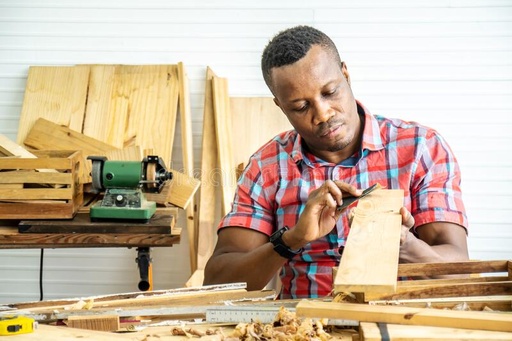
FREE
National Industrial Skills Development Programme (NISDP) Training Job Sheet - Furniture Making (Cabinets & Upholstery)
Author: Industrial Training Fund, Nigeria

FREE
National Occupational Standards for Construction/Building Trades in Nigeria - Carpentry - Levels 1, 2 & 3
Approved by the National Board for Technical Education (NBTE) - National Skills Qualification (NSQ), Nigeria

FREE
The "Electric Motors Troubleshooting and Maintenance Techniques" webinar discusses a variety of topics related to electric motors, such as the importance of being qualified before troubleshooting, different types of motors and their basic parts, using a multimeter to check windings, and troubleshooting and maintenance techniques. The instructors also cover the megohm test for a motor's windings, common causes of motor failure, and the hazards of misusing capacitors. They emphasize the importance of proper greasing for bearing maintenance and following the manufacturer's instructions carefully.
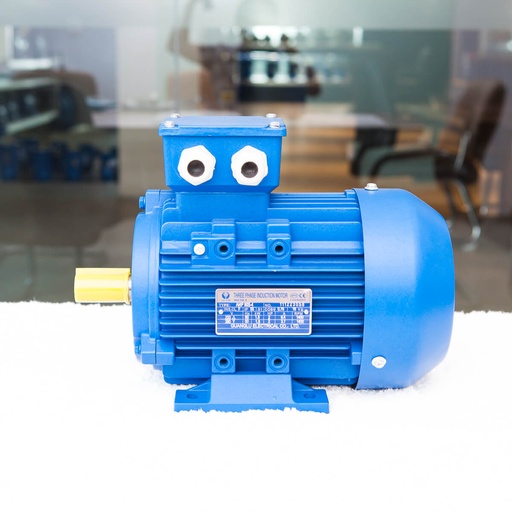
FREE
The term “3-phase” is used often in commercial and industrial applications, but the term is commonly misunderstood. In this free public 1-hour webinar, will break down 3-phase power and how it works.
Topics discussed include:
- Why do we use 3-phase power in today’s society? What are its benefits?
- How is 3-phase power transmitted and conducted through cities and facilities?
- How to understand multimeter readings on wires in a 3-phase electrical panel
- A brief overview of 3-phase terminology, such as power factor and kVA ratings
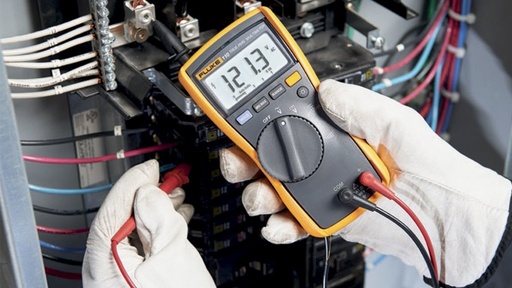
FREE
The term "troubleshooting" is a central part of almost any technical career, whether it be maintenance, operations, or engineering. However, the process of troubleshooting can vary greatly from place to place.
This free 1-hour public webinar will discuss a systematic troubleshooting approach that can be used any time you troubleshoot, regardless of whether it's on electrical systems, mechanical systems, HVAC, or operational.
Discussion includes: - What are the key things to think about when troubleshooting? - What are some common mistakes made during the troubleshooting process? - What steps can we take without needing to exposed to hazards? - Some applications of the troubleshooting process
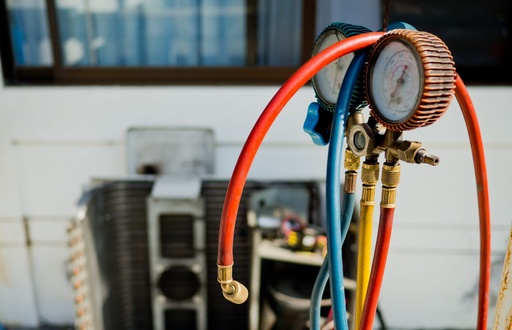
FREE
When air conditioning and refrigeration systems are not cooling properly, it is important for the HVAC technician to get it up and running quickly and efficiently. This free 1-hour public webinar is all about the systematic approach for troubleshooting HVAC systems.
Topics include:
• Understanding temperature and pressure readings
• Determining superheating and subcooling and interpreting results
• Common scenarios and how to fix them

FREE
National Occupational Standards for Construction/Building Trades in Nigeria - Plumbing - Levels 1, 2 & 3
Approved by the National Board for Technical Education (NBTE) - National Skills Qualification (NSQ), Nigeria
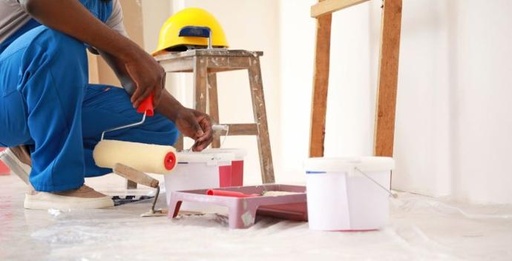
FREE
National Occupational Standards for Construction/Building Trades in Nigeria - Painting - Levels 1, 2 & 3
Approved by the National Board for Technical Education (NBTE) - National Skills Qualification (NSQ), Nigeria
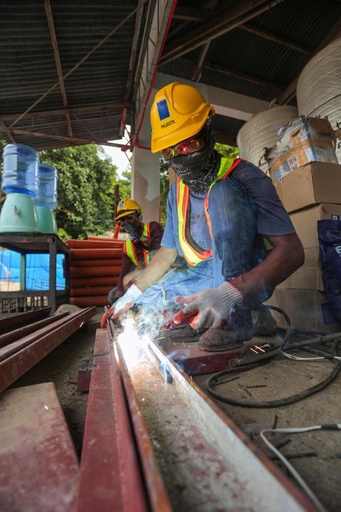
FREE
National Occupational Standards for Construction/Building Trades in Nigeria - Welding & Fabrication - Levels 1, 2 & 3.
Approved by the National Board for Technical Education (NBTE) - National Skills Qualification (NSQ), NigeriaApproved by the National Board for Technical Education (NBTE) - National Skills Qualification (NSQ), Nigeriaonal Occupational Standards for Construction/Building Trades in Nigeria - Welding & Fabrication - Levels 1, 2 & 3.
Approved by the National Board for Technical Education (NBTE) - National Skills Qualification (NSQ), Nigeriaational Occupational Standards for Construction/Building Trades in Nigeria - Welding & Fabrication - Levels 1, 2 & 3.
Approved by the National Board for Technical Education (NBTE) - National Skills Qualification (NSQ), Nigeria
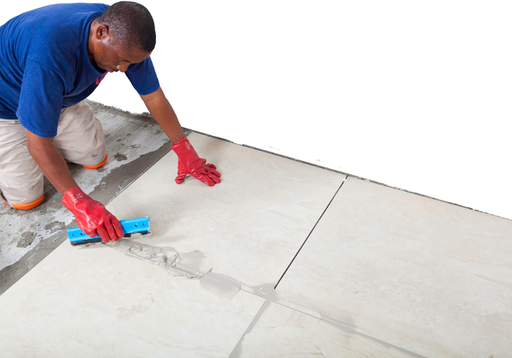
FREE
National Occupational Standards for Construction/Building Trades in Nigeria - Tiling & Decorative Stonework - Levels 1, 2 & 3.
Approved by the National Board for Technical Education (NBTE) - National Skills Qualification (NSQ), Nigeria

FREE
National Occupational Standards for the Engineering Sector in Nigeria - Articulated Vehicle Driving - Levels 3.
Approved by the National Board for Technical Education (NBTE) - National Skills Qualification (NSQ), Nigeria

FREE
This video lesson teaches or explains how to transform your walls into personalized and stunning works of art. The host will guide you through nine unique and creative DIY wall decoration ideas using simple tools and materials like drywall putty, adhesive tape, primer, water-based paints, and velvet colors.
The step-by-step instructions will enable you to create your customized decor on your walls. Whether you want to paste, brush, or paint directly on your walls, the video will show you how to create unique and eye-catching designs that stand out. Additionally, the video highlights color combinations and introduces glaze, a slow-drying oil-based paint that can be highly moldable and customizable, adding a unique touch to your wall decoration

FREE
This video lesson provides a comprehensive look at the French classical menu.
At the end of the lesson you will be able to;
- Understand the concept of the French classical menu
- Explain the different types of courses in the menu
- Perform the compilation of a menu
- Differentiate between seventeen courses and eleven course French classical menu

FREE
This professional training lesson provides participants with a comprehensive overview of beekeeping and honey production in the Caribbean. Participants will begin by gaining an understanding of the ecological importance of bees, basic honey bee biology and health & safety for beekeepers. This will be followed by exploring hive boxes, how to collect & analyze data through apiculture and tools & personal protective equipment used for management of bees. Disease & predators of honeybees will also be covered.
Additionally, economic factors related to apiculture such as honey production, value-added products, packaging standards and gender considerations in beekeeping will be discussed. By completing this training lesson, participants will have a more informed knowledge base related to sustainable practices employed in Apicultural activities throughout the Caribbean region.
Author: Iyanola Apiculture Collective

FREE
Being a server at a restaurant is hard. The best servers are master multi-taskers. Plus, your on-the-job performance can have a huge effect on a restaurant’s bottom-line and your tips.
While much of a server’s personality is already ingrained, other aspects of service (like how well they know the menu, wine pairings and how they interact with customers) can be learned.
So what does a server/waiter need to do to take their service from ordinary to extraordinary? Watch these videos to gain some invaluable tips.

FREE
The "How to Make a Bespoke Jacket Course" is designed for individuals who aspire to become skilled tailors or garment makers, with a focus on crafting bespoke jackets of the highest quality. These free video lessons provide a deep dive into the art and craft of creating a bespoke jacket from scratch.
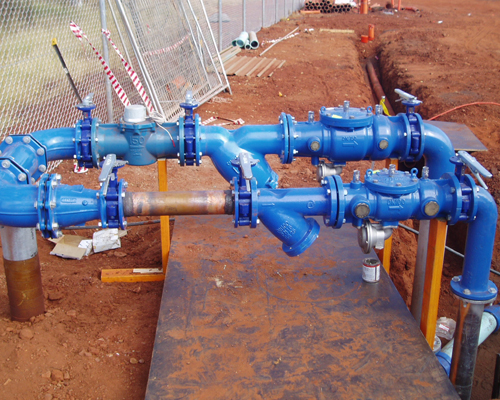
FREE
The content of this free ebook is organized to introduce the plumber apprentice to the theory and installation of potable water systems and landscaping irrigation systems. Providing safe potable water is one of the major responsibilities for plumbers and this unit will cover the design and installation of piping from the available water service to point of use. Water used for landscaping will also be addressed with a focus on a balanced approach to the design, usefulness, and safety of a residential automatic irrigation system.
Author: BCcampus, Canada - Plumbing Apprenticeship Program, Level 3

FREE
In this free three-part video, a TVET instructor discusses the Electric Hot Water Tank, and how it is serviced.
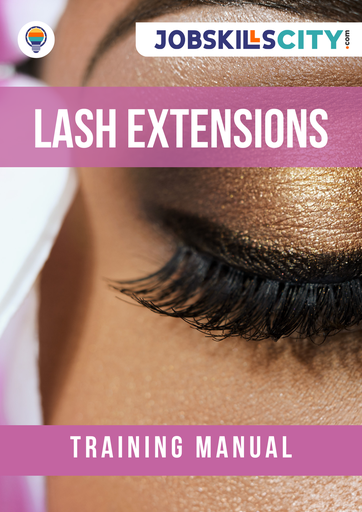
N 2,100
This comprehensive guide of 106 pages is designed to provide you with all the knowledge and skills you need to get started on your journey in the lash extension industry. This manual will take you through the basics of lash extensions, including all types of lash extensions, materials used for application and necessary tools. We'll also discuss important topics such as eye anatomy, safety measures and client consultation and preparation.
With this manual, you'll learn about different lash effect techniques, understand how to choose the right type of eyelash extension according to individual client needs, practice how to apply lashes correctly following a given step-by-step instruction along with tips and tricks for a successful outcome.
Moreover, we will cover hygienic practices during treatment, explaining the importance of using fresh adhesive every time and performing patch test prior starting any application procedure on clients eyes. Finally, we will discuss how to market your business by exploring various channels/platforms for promoting your products/services online or offline.
The Lash Extension Trainee Manual is designed for those who want to become eyelash extension professionals within the beauty industry.
This guide is also a useful training manual for seasoned eyelash extension professionals who want to teach their apprentices.
Topics to be covered includes;
- Lash Kit
- Lash Facts
- Eye Safety
- Eye Anatomy
- Lash Growth Cycle
- Client Consultation
- Adhesive
- Gluing Techniques
- Lash Angles, Thickness & Curl
- Lash Mappings
- Eyelash & Extensions
- Lash Extensions - Step by Step
- Lash Retention
- Lash Removal
- Maintenance & Aftercare
- Salon Hygiene & Safety
- Earning Potential
- Marketing
Lifetime Access

FREE
FarmerHubTV interviews Mr. Oduntan Adeshina CEO Bee - Craft Consult LLC USA (Utah) a German Trained Beekeeper to discuss on one of Nigeria's untapped goldmines and business opportunities.
Beekeeping is often promoted in the context of rural development because the practice provides monetary, nutritional, and social benefits to poor families, without requiring land ownership or large amounts of capital investment. It can be practiced as an additional source of income for farmers in rural areas and has been successfully implemented in poverty-alleviating projects. Beekeeping plays a major role in the socio-economic development of rural livelihoods. Beekeeping is a lucrative business if set up properly.
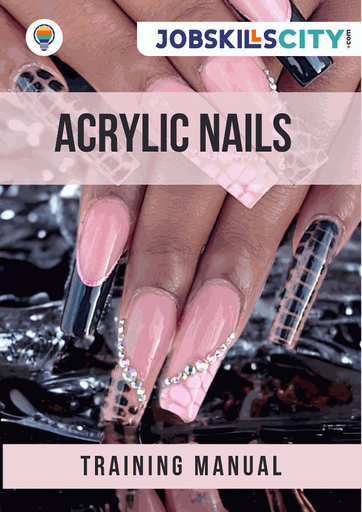
N2,100
Are you an aspiring nail technician wanting to learn everything there is to know about acrylic nails? Look no further - this Acrylic Nails Training Manual provides an extensive guide filled with all the necessary information and tips for a successful start in the industry.
This manual is also the ultimate acrylic nails extensions training manual to aid instructors teach their own classes. Give your students the best learning material with this ready to go manual - everything is covered from sanitation, techniques, protocols, and so much more! This step by step guide including pictures, photos and diagrams for visual student comprehension.
The Acrylic Nails Training Manual is designed for those who want to become nail technician professionals within the beauty industry.
This guide is also an extensive training manual for seasoned acrylic nail professionals who want to teach their apprentices.
Topics covered include:
- Introduction
- The Acrylic Nail System
- FAQ’s
- Misconceptions
- Nail Structure
- Nail Growth
- Acrylic Science
- Product & Tool Knowledge
- Acrylic Colours
- Files & E-Files
- Tips & Forms
- Hygiene & Safety
- Contraindications
- Contra-actions
- Consultation
- Nail Shapes
- Choosing & Applying Tips
- Nail Shapes Issues
- Clear Tips
- French White Tips
- Overlay Structure Zones
- Product Control
- Application
- Correcting Nail Shapes
- Forms
- Sculpting the Nail
- Maintenance
- Infill
- Acrylic Nail Repair
- Acrylic Nail Removal
- Troubleshooting
- Aftercare
Lifetime Access

FREE
The content of this block is organized to introduce the plumber apprentice to the theory and installation of Geothermal and Solar Energy systems. Ground source systems and solar systems provide a viable option for the green energy-minded installer. This module is designed to introduce the apprentice plumber to fundamental principles of design and installation, recognizing that these applications will be conducted differently within differing regions of the province.
Author: BCcampus, Canada - Block G /
Plumbing Apprenticeship Program Level 3

FREE
The content of this block is organized to introduce the plumber apprentice to the theory and installation of hydronic heating systems. With an emphasis on design and comfort, this block will cover topics related to Provincial heating guidelines as well as the design and installation of associated equipment such as heat sources, piping, valves, and controls.
Author: BCcampus, Canada - Block F / Plumbing Apprenticeship Program, Level 3

FREE
The content of this Block is organized to introduce the plumber apprentice to the theory and installation of compressed air systems. Compressed air is a widely used medium in industrial and commercial applications and as such requires special attention with regard to design and installation. This Block is designed to cover installation, commissioning, and maintenance of these important systems.
Author: BCcampus, Canada - Block D / Plumbing Apprenticeship Program, Level 3
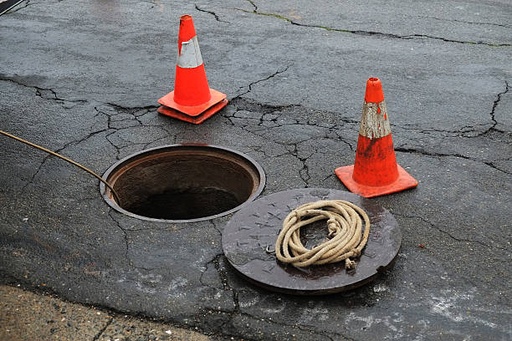
FREE
The content of this block is organized to introduce the plumber apprentice to the theory and installation of drainage systems. These systems are designed to convey sewage from the point of use to the municipal or city system.
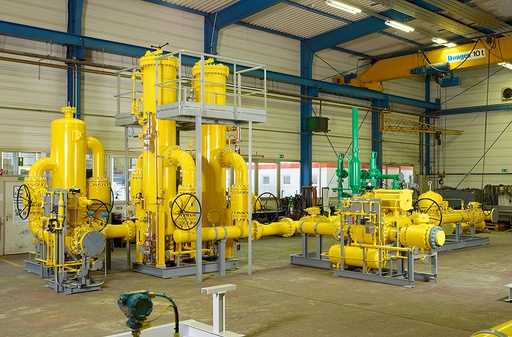
FREE
The content of this block is organized to introduce the plumber apprentice to the theory and installation of natural gas systems. This block will cover topics from design and installation code requirements to air supply and venting requirements and applications. Flame safeguards will also be addressed with special attention being given to the B149.1 Natural Gas and Propane Installation Code.
Author: BCcampus, Canada - Block E / Plumbing Apprenticeship Program, Level 3
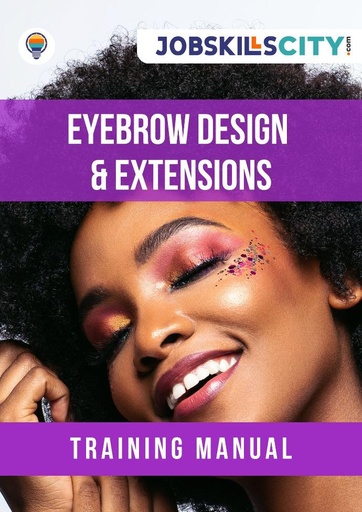
N 2,100
Are you looking to increase your skills in eyebrow design and extensions? Are you a beauty professional and ready to take your salon services to the next level? Look no further. This comprehensive training manual is written by experts in the field of eyebrow design and extensions and provides readers with an in-depth look at everything from the fundamentals to mastering intricate techniques. With step-by-step instructions, detailed diagrams, and helpful hints, this manual will help any reader become an expert in the field.
Be a part of the billion-dollar industry of eyebrow design and extensions! It's clear that this trend is here to stay. Not only can mastering the art of brow feathering and extensions increase your knowledge and service offerings, but it can also fast-track your career. These techniques are easy to learn with practice and designed for immediate income! Whether you're looking to add brow feathering and extensions as a natural add-on to your existing service menu or as a standalone service, the possibilities are endless.
Our expert instructors will guide you through the 3-step procedure of defining brow shape, feathering and extensions. You'll also learn about the importance of client consultation, sanitation, contraindications, set-up and preparation, care of extensions, as well as proper brow removal.
For beginners, beauty technicians and instructors
The ebook starts off with a comprehensive introduction to brow design, highlighting its importance in enhancing one's facial features. It then delves into the topic of brow mapping, providing readers with essential tips and tricks on how to precisely measure and map out the ideal eyebrow shape for any face. With a detailed explanation of face shapes and elements of asymmetry, this book teaches readers how to best flatter each individual client's unique features.
One of the key factors in achieving flawless brows is understanding hair growth stages and using this knowledge to create tailored designs for clients. This book covers everything from health and hygiene practices to tools needed for successful brow mapping. Readers will also learn about the golden ratio – a crucial aspect of achieving symmetrical brows – as well as practical worksheets that they can use during their practice sessions. It also guides readers through measuring techniques and connecting eyebrow lines accurately.
Eyebrow Design & Extensions also covers important considerations such as contraindications, room setup, client consultations, and aftercare procedures. With step-by-step instructions and easy-to-follow illustrations, readers will learn how to create basic brow shapes using feathering techniques or add volume with eyebrow extensions.
For those interested in starting a business or expanding their current one, this book provides valuable insights and tips on marketing, pricing, and building a successful brand. With its comprehensive coverage and practical guidance, Eyebrow Design & Extensions is a must-have resource for anyone looking to excel in the world of eyebrow design and extensions.
Lifetime Access
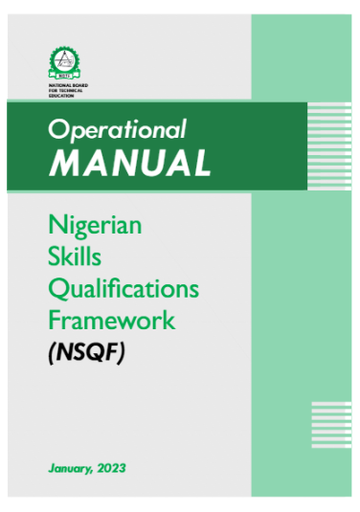
FREE
The "Operational Manual - NSQF (National Skills Qualification Framework)" is a comprehensive guide designed to align vocational education and training programs with national standards and industry requirements in Nigeria. It outlines the framework for skill development and certification, ensuring that learners acquire skills that are not only relevant but also meet national and international quality benchmarks.
It offers guidelines for curriculum development, competency-based assessment, and the recognition of prior learning, all in accordance with the NSQF.
Author: National Board for Technical Education (NBTE) - National Skills Qualification (NSQ), Nigeria

FREE
Applied Math for Food Service is an adapted open textbook. This new open textbook remixes content from two open textbooks published by BC Campus under CC BY licenses. Basic Kitchen & Food Service Management by The BC Cook Articulation Committee, and Math for Trades by Chad Flinn and Mark Overgaard.
Author: Amy Savoury, BC Campus

FREE
This textbook is an introduction to tourism written with a first year college and university audience in mind.
Edited by: Morgan Westcott; Wendy Anderson; and Adapted by NSCC

N 4,500
Chemistry N5 is one of many publications introducing the gateways to Engineering Studies. This ebook is designed to develop the skills for learners that are studying toward an artisanship in Chemical Engineering related fields and to assist them to achieve their full potential.
This ebook, with its modular competence-based approach, is aimed at assisting facilitators and learners alike. With its comprehensive understanding of the engineering construction environment.
The subject mater is presented as worked examples in the problem-solving-result methodology sequence, supported by numerous and clear illustrations. Practical activities are included throughout the book. The author is one who is well known and respected in the manufacturing, engineering and related technology fields. Their extensive experience provides an excellent base for further study, as well as a broad understanding of the technology and the knowledge to succeed.
Author: Nicholas Taylor, Hybrid Learning Solutions
Yes, indeed! You can access the first chapter of this ebook for review prior to making a purchase.
Upon purchasing this ebook, you will be granted full access for a period of one year.
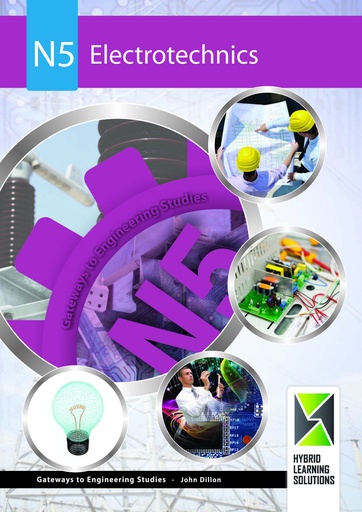
N 4,500
Electrotechnics N5 is one of many publications introducing the gateways to Engineering Studies. This ebook is designed to develop the skills for learners that are studying toward an artisanship in Electronics related fields and to assist them to achieve their full potential.
This ebook, with its modular competence-based approach, is aimed at assisting facilitators and learners alike. With its comprehensive understanding of the engineering construction environment.
Author: John Dillon, Hybrid Learning Solution
Yes, indeed! You can access the first chapter of this ebook for review prior to making a purchase.
Upon purchasing this ebook, you will be granted full access for a period of one year.
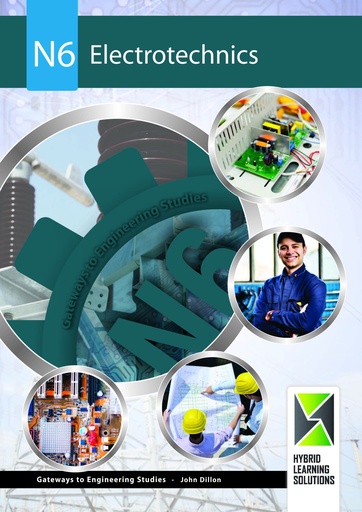
N 4,500
Digital Electronics N5 is one of many publications introducing the gateways to Engineering Studies. This ebook is designed to develop the skills for learners that are studying toward an artisanship Electronics related fields and to assist them to achieve their full potential.
This ebook, with its modular competence-based approach, is aimed at assisting facilitators and learners alike. With its comprehensive understanding of the engineering construction environment.
Author: John Dillon, Hybrid Learning Solutions
Yes, indeed! You can access the first chapter of this ebook for review prior to making a purchase.
Upon purchasing this ebook, you will be granted full access for a period of one year.
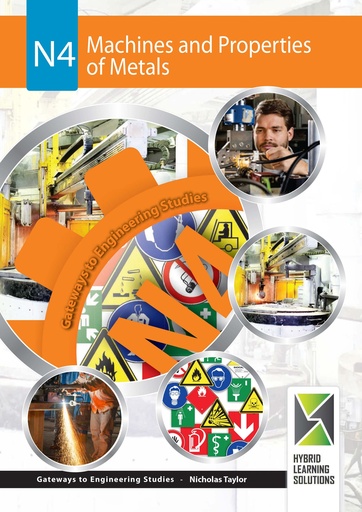
N 4,500
Machines & Properties of Metal N4 is one of many publications introducing the gateways to Engineering Studies. This ebook is designed to develop the skills for learners that are studying toward an artisanship in engineering and manufacturing related fields and to assist them to achieve their full potential.
This ebook, with its modular competence-based approach, is aimed at assisting facilitators and learners alike. With its comprehensive understanding of the engineering construction environment.
Author: Nicholas Taylor, Hybrid Learning Solutions
Yes, indeed! You can access the first chapter of this ebook for review prior to making a purchase.
Upon purchasing this ebook, you will be granted full access for a period of one year.
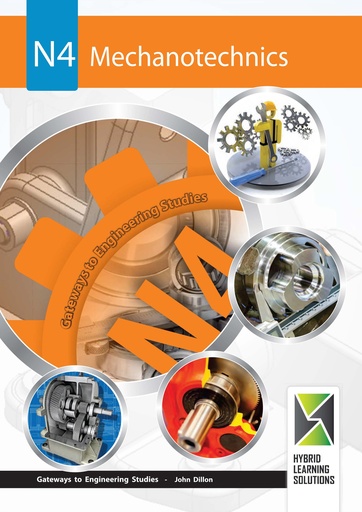
N 4,500
Mechanotechnics N4 is one of many publications introducing the gateways to Engineering Studies. This ebook is designed to develop the skills for learners that are studying toward an artisanship in engineering and manufacturing related fields and to assist them to achieve their full potential.
This ebook, with its modular competence-based approach, is aimed at assisting facilitators and learners alike. With its comprehensive understanding of the engineering construction environment.
Author: Nicholas Taylor, Hybrid Learning Solutions
Yes, indeed! You can access the first chapter of this ebook for review prior to making a purchase.
Upon purchasing this ebook, you will be granted full access for a period of one year.
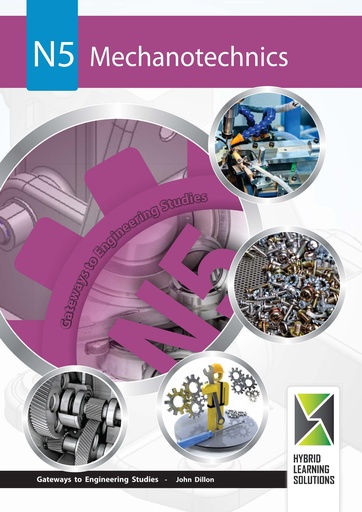
N 4,500
Mechanotechnics N5 is one of many publications introducing the gateways to Engineering Studies. This ebook is designed to develop the skills for learners that are studying toward an artisanship in engineering and manufacturing related fields and to assist them to achieve their full potential.
This ebook, with its modular competence-based approach, is aimed at assisting facilitators and learners alike. With its comprehensive understanding of the engineering construction environment.
Author: Nicholas Taylor, Hybrid Learning Solutions.
Yes, indeed! You can access the first chapter of this ebook for review prior to making a purchase.
Upon purchasing this ebook, you will be granted full access for a period of one year.

FREE
Database Design - 2nd Edition covers database systems and database design concepts.
New to this edition are SQL info, additional examples, key terms, and review exercises at the end of each chapter.
Author: Adrienne Watt & Nelson Eng | 2nd Edition
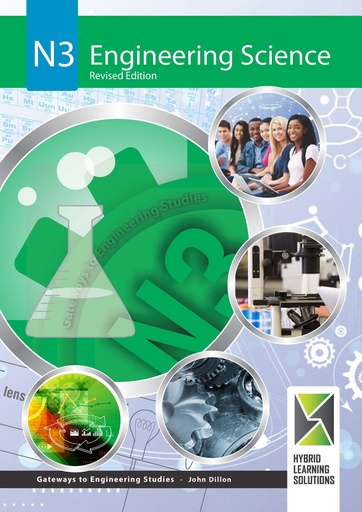
N4,000
N3 Engineering Science is one of many publications introducing the gateways to Engineering Studies. This course is designed to develop relevant skills for learners and to assist them to achieve their full potential in an engineering career. This book, with its modular competence-based approach, is aimed at assisting facilitators and learners alike. With its comprehensive understanding of the engineering construction environment, it assists them to achieve the outcomes set for the course.
The subject matter is presented as worked examples in the
problem-solving-result methodology sequence, supported by numerous and clear
illustrations. Practical activities are included throughout the book.
The authors are well known and respected in their fields. Their extensive
experience provides an excellent base for further study, as well as a broad
understanding of technology and the knowledge to succeed.
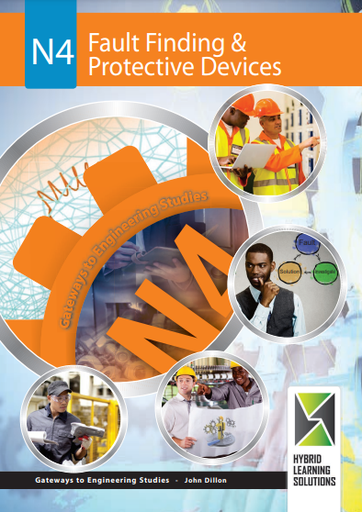
N 4,500
N4 Fault Finding and Protective Devices is one of many publications introducing the gateways to Engineering Studies. This ebook is designed to develop the skills for learners that are studying toward an artisanship in electrical related fields and to assist them to achieve their full potential.
This ebook, with its modular competence-based approach, is aimed at assisting facilitators and learners alike. With its comprehensive understanding of the engineering construction environment.
The subject mater is presented as worked examples in the problem-solving-result methodology sequence, supported by numerous and clear illustrations. Practical activities are included throughout the book. The author is one who is well known and respected in the manufacturing, engineering and related technology fields. Their extensive experience provides an excellent base for further study, as well as a broad understanding of the technology and the knowledge to succeed.
Author: John Dillon, Hybrid Learning Solutions
Yes, indeed! You can access the first chapter of this ebook for review prior to making a purchase.
Upon purchasing this ebook, you will be granted full access for a period of one year.
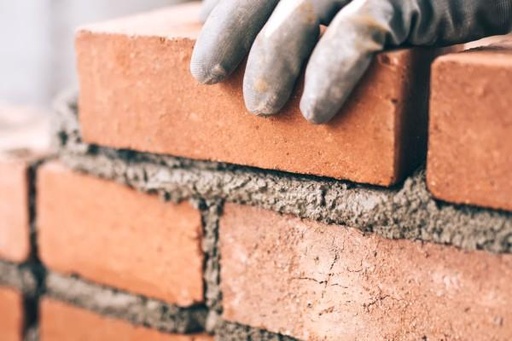
FREE
Masonry is the art and craft of building and fabricating in stone, clay, brick, or concrete block.
From these video lessons you will learn to;
- Identify the tools and materials that are used in the masonry trade
- Understand types of bonding
- Proper mixing of materials for building a wall with bricks and cement
- How to build a wall with bricks & cement
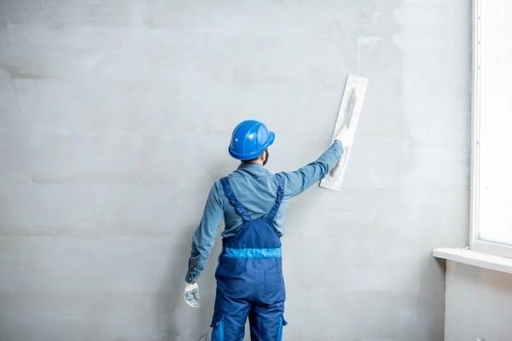
FREE
FREE
The video explains the process of wall plastering and the importance of covering rough surfaces with a thin coat of mortar. The plaster is applied in three coats, with the first being the base and the third being the finishing coat. The quantity of materials needed for each coat is calculated using specific ratios and formulas, and tools such as a spirit level, wooden float, and spade are essential for the job. The video also shows various tools and materials used for wall plastering, including a wooden box and a wheelbarrow.
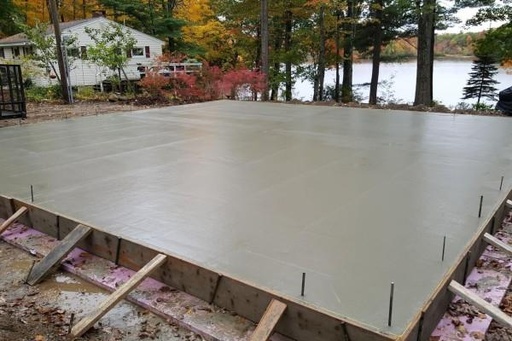
FREE
Masonry is the art and craft of building and fabricating in stone, clay, brick, or concrete block.
The video tutorial teaches how to build a reinforced concrete slab using a specific ratio of cement, sand, and coarse aggregates. The instructor explains the components of concrete and their role in the mixture, introduces the necessary tools and equipment, and stresses the importance of safety. The batching process for creating the concrete mix using the volume batching method with a standard wooden gorge box is explained, and the quantities of materials needed are determined based on the dimensions of the slab. The instructor concludes by asking participants to stay safe and signing off for the next session where they will begin the mixing process.

FREE
Masonry is the art and craft of building and fabricating in stone, clay, brick, or concrete block.
These video lessons will show you how to perform the tasks essential to masonry, including plastering, bricklaying, identification of tools and materials of the trade and more. Learn cutting-edge techniques to provide you new skills that can boost your career in the construction trade.

FREE
The video tutorial teaches how to properly set up and level equipment for road construction using a total station instrument. The tutorial covers the components of the total station, how to occupy a known point, leveling and orienting the instrument, data collection, stakeout of a point, and the importance of accurately measuring and setting out points for road construction. The worker emphasizes the importance of handling the expensive equipment with care and taking the time to ensure accurate measurements.
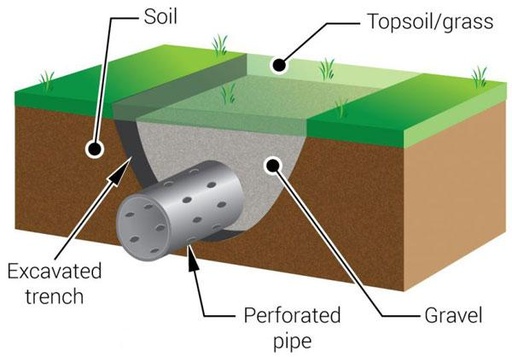
FREE
The video explains the importance of drainage systems in road construction and the installation process of perforated pipes. The video covers the excavation of trenches, installation of gravel, and laying of perforated pipes with 8mm diameter holes every 10cm. The video emphasizes the importance of low-pressure points and selecting appropriate materials to prevent obstructions. Additionally, necessary tools such as a spirit level, grab hammer, and chauffeur are discussed.
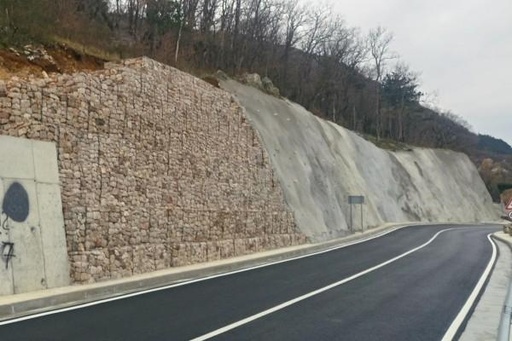
FREE
The video demonstrates the use of gabion retaining walls in road construction to provide stability and prevent soil from sliding. Gabions are wire mesh baskets filled with stones and create a retaining wall that can withstand slopes and allow for drainage. The video covers the tools and materials required for construction, such as compacting equipment, gabion baskets, and stones, and shows how to unfold gabion baskets, fill them with stones, and perform backfilling.

FREE
The video shows the Rwanda Polytechnic team constructing a wooden bridge. They discuss the personal protective equipment, tools, and materials they will use, including a concrete abutment and timber. The team levels the abutments, adds a timber headstock for support, and takes measurements to ensure the beam is centered and level. They also measure the distance between two boards and use a jigsaw to cut the wood after ensuring it is connected to electricity.
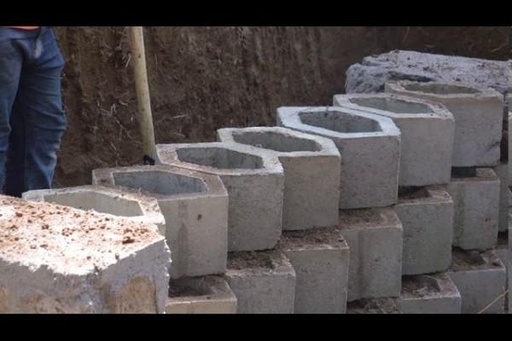
FREE
The video demonstrates the construction process of a honeycomb retaining wall for road construction at Rwanda Polytechnic. The first step involves laying a base of gravel and sand, followed by compacting the soil using a plate compactor machine. Instructor Eugene introduces the necessary tools, equipment, and materials required for the job, such as a plastic mallet, chisels, and safety goggles. Additionally, the video provides a tutorial on starting and operating a machine used for optimum compaction during the construction process. The honeycomb retaining wall is designed to prevent soil erosion and aid in drainage.
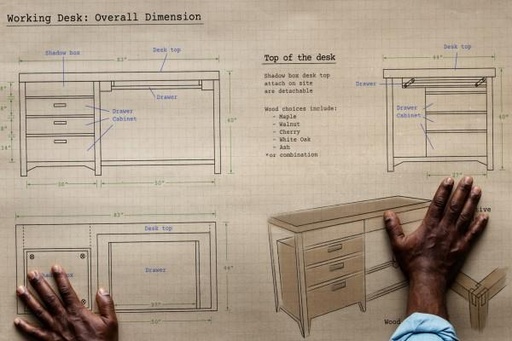
FREE
Trainers from the Revenue Activity School introduce basic drawing techniques, specifically the isometric projection of a sample vanity. They discuss different types of projections, introduce drawing instruments like the compass and set square, and present the project for the lesson, which is a sample vanity with measurements of 900mm, 500mm, and 740mm. The trainers also encourage viewers to visit Wonderful Technique's e-learning website for more tutorials.
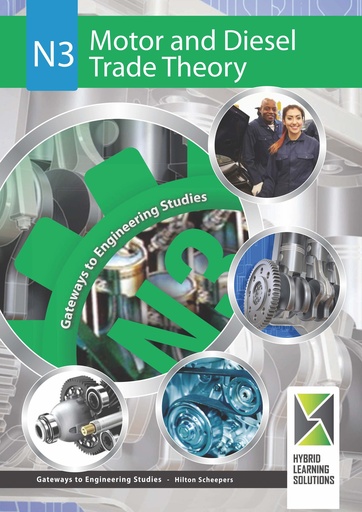
N 4,000
N3 Motor and Diesel Trade Theory is one of many publications introducing the gateways to Engineering Studies. This ebook is designed to develop the skills for learners that are studying toward an artisanship in modern automotive services fields and to assist them to achieve their full potential.
This ebook, with its modular competence-based approach, is aimed at assisting facilitators and learners alike. With its comprehensive understanding of the engineering construction environment.
The subject mater is presented as worked examples in the problem-solving-result methodology sequence, supported by numerous and clear illustrations. Practical activities are included throughout the book. The author is one who is well known and respected in the manufacturing, engineering and related technology fields. Their extensive experience provides an excellent base for further study, as well as a broad understanding of the technology and the knowledge to succeed.
Author: Hilton Scheepers, Hybrid Learning Solutions
Yes, indeed! You can access the first chapter of this ebook for review prior to making a purchase.
Upon purchasing this ebook, you will be granted full access for a period of one year.

FREE
The video focuses on basic furniture carpentry, discussing the importance of selecting properly dried and measured timber and demonstrating the necessary preparation of materials using machines like the trim saw, surface planar, thickness, and circular saw. PPE is crucial while operating these machines, and measuring and marking where the cuts will be made is necessary. The instructors also demonstrate how to joint a remaining side for the correct thickness, measure the moisture content of wood using a hydrometer, and check the good and bad sides of the wood. The video concludes by offering further learning opportunities on their e-learning website.
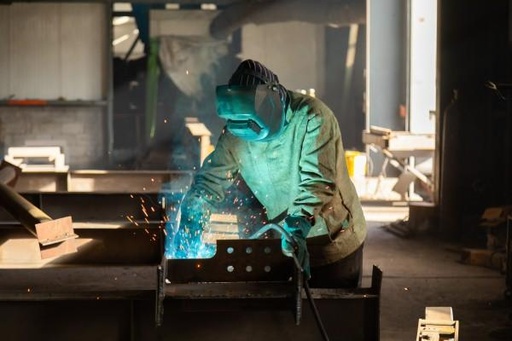
FREE
In the video, a welding instructor demonstrates how to set up a Shielded Metal Arc Welding (SMAW) machine for sheet metal welding. He explains the components of the AC welding machine, how to connect the electrode and ground cables, and the accessories used in welding. The instructor also introduces the electrode used for welding, provides information on the amperage range for welding, and explains how to adjust the current for different electrodes. The video offers a comprehensive guide to setting up and using an SMAW welding machine for sheet metal welding.
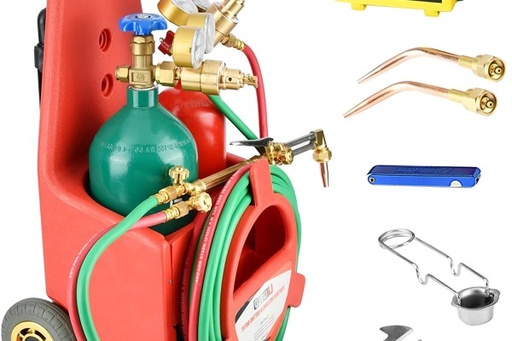
FREE
The Rwanda Polytechnic welding course explains the advantages and disadvantages of welding as a metal joining process. The video then focuses on oxyacetylene gas welding, describing it as a fusion welding method that requires proper use of gases and equipment to successfully form a permanent joint. The instructor explains that acetylene and oxygen are used to produce maximum heat, and the selection of gases depends on several factors such as the material being welded and the required temperature. The video also discusses the disadvantages and limitations of manual welding, including the need for specialized training and fixtures to hold the metal pieces together.

FREE
The video teaches how to properly light and switch off an oxyacetylene gas torch for welding. It covers the use of a cylinder key, pressure regulation, nozzle cleaning, and flame types. Safety precautions such as wearing goggles and keeping the cylinder key nearby are emphasized. The steps to safely shut off the welding torch are also explained, including releasing the remaining gas in the hose pipe. Different types of flames are discussed, each with varying temperatures and used for different purposes in oxyacetylene gas welding.
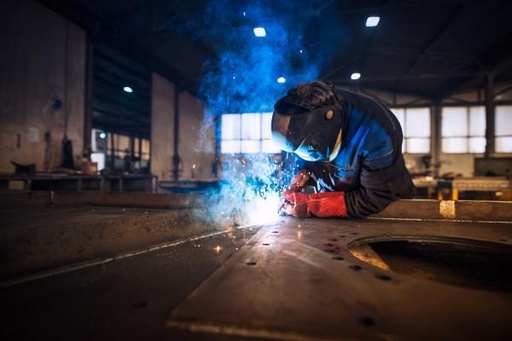
FREE
The video showcases an instructor's demonstration of a bead weld in the down hand position using shielded metal arc welding. The instructor covers safety precautions, uses a welding machine, cables, s clamp, electrode cable, chipping hammer and brush, and helmet. The welding position requires minimal safety measures, and the demonstration concludes with cleaning up the welded bead using a wire brush and chipping hammer.

FREE
The video demonstrates the process of creating a butt joint using TIG welding, emphasizing safety precautions such as proper grounding and using safety shields. The instructor explains the process of adjusting the current and gases before starting welding and demonstrates the procedure of creating a clean butt joint in 1G down hand position. The video ends with a reminder to switch off the welding machine and clean and organize the work area.
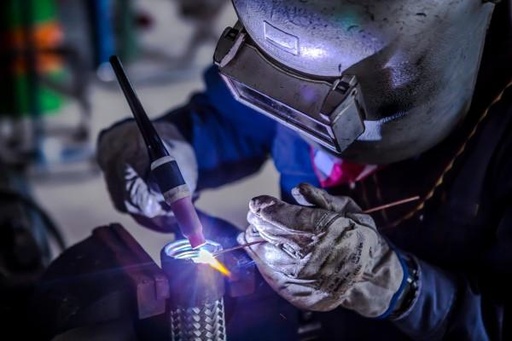
FREE
The video teaches how to create a butt joint using the TIG welding process. The instructor shows how to insert the tungsten electrode correctly, adjust the current and gases, and emphasizes safety precautions. The process of creating the butt joint in 1G down hand position is demonstrated, starting with edge preparation and tacking before filling the joint with filler metal. The finished product is a clean weld that does not require excess cleaning. The video ends with a reminder to switch off the welding machine and clean and organize the working area.

FREE
In this welding tutorial video, the instructor demonstrates how to create a butt joint on both sides at a 45-degree angle using the SMAW welding process. They begin by discussing the importance of choosing the correct electrode for the job and ensuring that the welding machine is properly set up. The instructor then shows how to properly prepare the edges of the metal pieces before clamping them together. They emphasize the importance of using proper clamps to hold the pieces in place during welding. The welding process is demonstrated, starting with the initial tack welds and then moving on to filling the joint with filler metal. The instructor explains how to control the welding arc and adjust the amperage during the welding process. They also discuss the importance of maintaining a consistent travel speed while welding. The finished weld is inspected and the video ends with a reminder to properly clean up the work area and equipment.
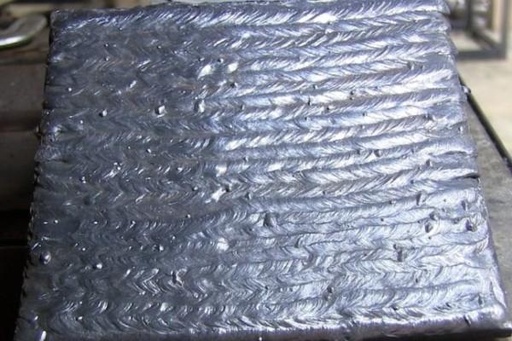
FREE
Welding is an important industrial and mechanical process. Welding is a fabrication process whereby two or more parts are fused together by means of heat, pressure or both, forming a join as the parts cool.
Welders cut, join and shape metal plate, pipework and composite materials in the aerospace, construction and civil engineering industries.
These online welding lessons cover the fundamentals of industrial welding.

FREE
In this video, a carpenter teaches how to make a basic chair using traditional joinery techniques. The video begins with an overview of the tools needed to make the chair and the measurements needed for each piece. The carpenter then proceeds to cut the wood pieces to the right size and shape using a combination of hand and power tools. The next step involves joining the legs and the apron using mortise and tenon joints. The carpenter also demonstrates how to create a curved backrest using a jigsaw. Once all the pieces are joined, the chair is sanded and finished using a combination of sandpaper and wood stain. The final product is a sturdy and functional chair that can be customized to fit the desired style.
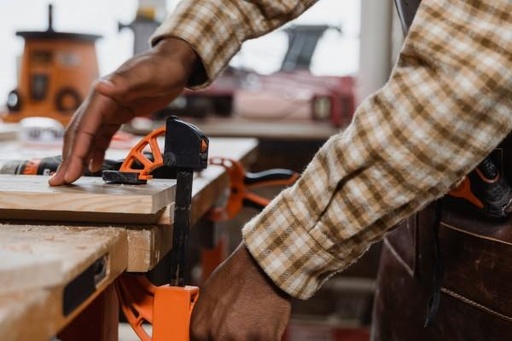
FREE
In this video, a carpentry instructor demonstrates how to make a basic table using common woodworking tools and techniques. The instructor starts by explaining the necessary tools and materials such as saws, drills, sandpaper, wood glue, and screws. The instructor also explains how to select appropriate wood and how to measure and cut it to the desired length. The instructor then demonstrates how to assemble the table legs and attach them to the tabletop using screws and wood glue. They also show how to use a belt sander to smooth the surface of the tabletop. Finally, the instructor demonstrates how to apply a finish to the table to protect the wood and give it a polished appearance. The video ends with the finished product, a sturdy and functional table that can be customized with different finishes or designs.
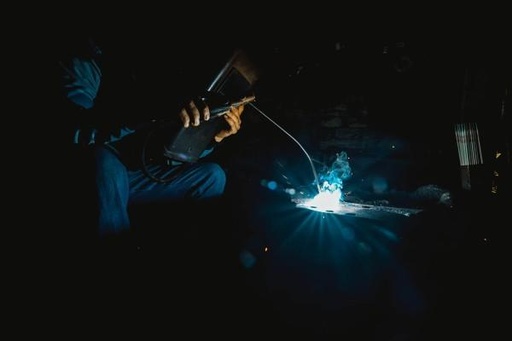
FREE
This video tutorial is about inserting, removing, cutting, and grinding discs in welding. The instructor starts by showing the various types of discs used in welding, including cutting discs, grinding discs, and flap discs, among others. The instructor then demonstrates how to insert and remove the discs from an angle grinder, including how to use the spindle lock to secure the disc. They emphasize the importance of safety when inserting and removing the discs and warn against using damaged or worn-out discs.
Next, the instructor demonstrates how to use the cutting disc to cut through metal, showing proper positioning and technique to achieve a clean cut. They also show how to use the grinding disc to smooth rough edges and how to use the flap disc for finishing and polishing. The instructor gives tips on how to achieve a smooth finish and how to avoid overheating the metal during the grinding process.
The video also covers safety precautions when using discs, such as wearing proper personal protective equipment, keeping a safe distance from the workpiece, and avoiding loose clothing or jewelry that could get caught in the grinder. Finally, the instructor provides some tips on how to extend the life of the discs by storing them properly and avoiding excessive force or pressure during use.
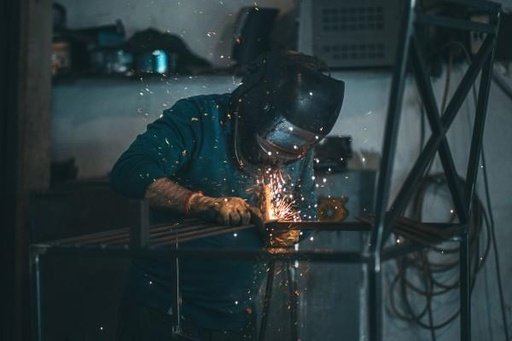
FREE
In this welding video, the instructor demonstrates how to perform a 1F lab joint using the stick welding process. The 1F lab joint involves welding two pieces of metal perpendicular to each other. The instructor starts by explaining the importance of selecting the correct electrode and setting the machine to the correct polarity. The instructor then shows how to properly prepare the metal pieces for welding, including cleaning, beveling, and tacking the joint. The welding process involves running a series of short beads along the joint, alternating between the two sides to prevent warping. The instructor also provides tips on maintaining a consistent arc length and electrode angle for a strong, clean weld. The finished product is a solid 1F lab joint that is ready for further use.
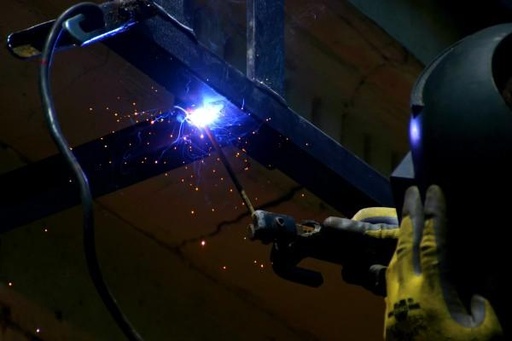
FREE
In this video, the instructor demonstrates how to cut metal using a shear cutting machine. The video begins with an introduction to the machine and its components. The instructor emphasizes the importance of safety and demonstrates how to properly secure the workpiece in the machine. The video shows the proper techniques for cutting straight lines, curves, and circles using the machine. The instructor provides tips on how to achieve a clean cut and how to properly adjust the cutting blades. The video also covers the maintenance of the machine, including how to keep the blades sharp and how to properly oil the machine. The video ends with a reminder to clean up the work area and properly store the machine.

FREE
In this video, the instructor demonstrates the process of oxyacetylene gas cutting in welding. This process involves using a gas torch and a high-temperature flame to cut metal. The instructor explains the components of the cutting torch, including the oxygen and acetylene tanks, regulators, and hoses. They also emphasize the importance of safety, such as wearing protective clothing and checking the work area for potential hazards. The instructor then explains the proper technique for lighting the torch and adjusting the flame to the desired temperature. They demonstrate how to properly hold and move the torch to cut through metal, as well as how to deal with common issues such as backfire and flashback. The video concludes with a reminder to turn off the gas and properly store the equipment after use.
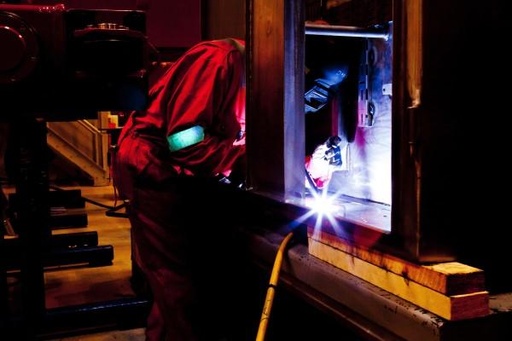
FREE
In this video, the instructor demonstrates how to perform a 1G weld. The 1G position is where the pipe is in a horizontal position, and the weld is performed in a flat position. The instructor explains the importance of safety precautions, such as wearing protective clothing and positioning the welding machine away from flammable materials. He then demonstrates the process of preparing the metal surface, setting up the machine, and positioning the electrode for welding. He also emphasizes the importance of using the correct amperage for the thickness of the metal being welded. The instructor then demonstrates the process of welding, moving the electrode in a circular motion to create a clean and uniform weld bead. Finally, he explains the importance of post-weld cleaning and inspection to ensure the quality of the weld.
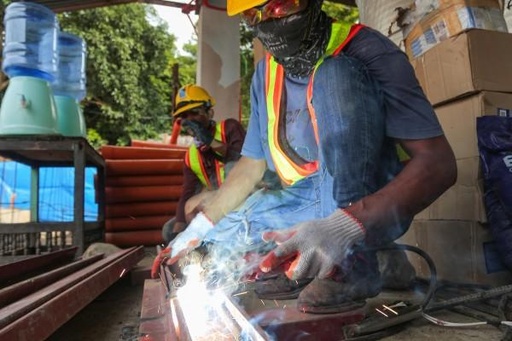
FREE
In this video, the instructor demonstrates how to perform a tee joint in the 1F position using the Gas Tungsten Arc Welding (GTAW) process. The instructor explains the setup and preparation required for welding the tee joint, including selecting the appropriate welding machine and ensuring proper grounding. They also discuss the importance of safety measures such as wearing proper welding gear and positioning the workpiece at a comfortable height.
The welding process starts with the edge preparation, where the instructor shows how to properly clean and bevel the edges of the workpieces. They then tack the workpieces in place and demonstrate how to control the heat input using the foot pedal and filler rod. The instructor emphasizes the importance of maintaining a consistent weld pool and avoiding overheating the workpiece.
Once the joint is fully welded, the instructor demonstrates how to properly clean and inspect the finished weld to ensure it meets industry standards. The video concludes with a summary of the key steps involved in welding a tee joint in the 1F position using the GTAW process.
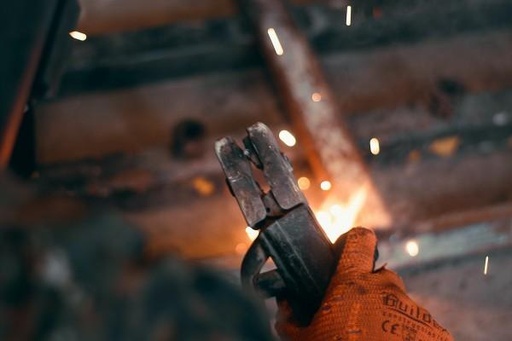
FREE
In this video, the instructor demonstrates how to create a tee joint brazed joint. The brazing process involves using a filler metal with a lower melting point than the base metal being joined and heating the workpieces to a temperature that allows the filler metal to melt and flow into the joint. The instructor discusses the importance of cleaning the workpieces thoroughly to remove any oils or contaminants that could affect the brazing process. They then demonstrate how to properly position and clamp the workpieces before applying flux to the joint. The flux helps to prevent oxidation and promotes wetting of the filler metal. The instructor then shows how to heat the joint using a brazing torch and apply the filler metal to the joint. The finished product is a strong, clean joint that does not require excess cleaning. The video ends with a reminder to turn off the torch and properly clean up the work area.

FREE
In partitioning, a carpenter creates a dividing wall in a room or space. The process begins with measuring and marking the area where the partition will be installed. The carpenter then constructs a frame using timber or metal studs, which is secured to the floor and ceiling. The frame is covered with plasterboard or drywall, which is then taped and filled to create a smooth surface. The carpenter can then add doors, windows, or other features to the partition as needed. Finally, the finished partition is painted or decorated according to the client's specifications.
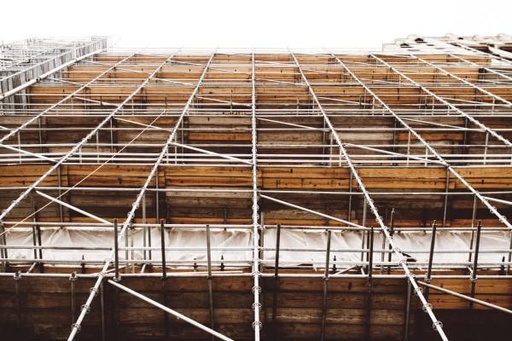
FREE
In scaffolding, temporary structures are built to support workers and materials during construction, repair or maintenance of buildings, bridges, and other structures. This Carpentry Level 4 video focuses on the various types of scaffolding, including frame scaffolding, suspended scaffolding, and mobile scaffolding. The instructor discusses the different components of scaffolding, including frames, braces, planks, and safety equipment, and how to assemble and disassemble them. Safety precautions such as proper anchoring, use of personal protective equipment, and weight limitations are also emphasized. The video provides detailed instructions on how to build and use different types of scaffolding, ensuring that workers can do their jobs safely and efficiently.

FREE
In Carpentry Level 4, the topic covered is the installation of a wooden floor. The instructor starts by explaining the importance of selecting the right type of wooden floor for a specific project and calculating the required amount of material. The tools required for the job are also discussed, which include a miter saw, table saw, jigsaw, hammer, and pneumatic nailer.
Next, the instructor explains the process of preparing the subfloor, which includes leveling, cleaning, and moisture testing. The installation process is then demonstrated, starting with the placement of the first row of boards. The instructor explains how to use a pneumatic nailer to secure the boards to the subfloor, as well as how to stagger the boards and maintain proper spacing.
The video also covers how to cut boards to fit around obstacles such as doorways and vents using a jigsaw or handsaw. The instructor explains how to properly measure and mark the boards to ensure a precise fit. The video concludes with an explanation of how to finish the edges of the floor with trim, including how to cut and install quarter-round and shoe molding.